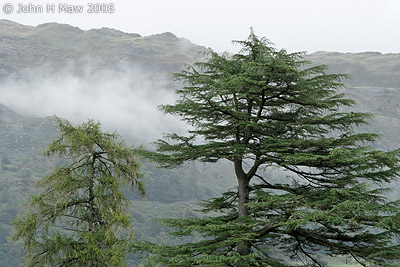Image Storage - keeping them safe (part 2)

In the first part of this piece I took a look at the likely risks to your digital files. In this second part I present my thoughts on some of the available solutions. The aim is that the files will still be usable for an indefinite period of time. There are a number of measures which in combination are likely to achieve this.
Lets assume that hard disk failures are a fact of life (because they are - its not if, but when). But the risk of data loss can be reduced to almost nothing by storing the images on more than one drive. This can be done manually, by using some sort of backup utility (a piece of software that copies and ideally verifies your images to a second location) or by using several hard drives in a RAID (Redundant Array of Inexpensive Disks) configuration. A RAID is a collection of hard drives that are set up to appear to the user just as one drive would. Mirroring (RAID 1) is where two or more drives hold the same information. Data is written to both/all drives simultaneously. If one fails the data is still on the other/s. A replacement drive is swapped for the faulty one and the RAID is rebuilt. In this set-up a RAID of two 500GB drives gives a usable space of 500GB (half of the total capacity, because the information is duplicated). RAID 5 requires a minimum of 3 drives and splits the data between them in such a way that if one drive fails the data can be reinstated from the other drives. If you had four 500GB drives in a RAID 5 configuration you would have 1,500GB usable capacity (total capacity minus the capacity of only one drive). This makes RAID 5 a more efficient proposition if more than two drives can be used (For much more on these and other RAID configurations read this page on Wikipedia).
So it looks as though a RAID is a good idea. It is, but it is not the whole solution. A RAID will not protect you against corruption of data. Some sort of removable media is the best solution so that you can at least go back to your original files. There is a question-mark over the longevity of some brands of CDs and maybe to some extent DVDs. The best bet for long life is to use DVD-RAM disks. These are much more robust than other types of DVD. They are available open (like CDs and other DVDs) or in caddies. The caddied versions are protected from dust, fingerprints and scratches by being in a case, and so are a better option. You will need a drive that can accept caddies, and most drives don't, but suitable drives are available and are inexpensive.
Lastly, what happens in the event of fire, theft or flood (can't think of anything else, as rampaging herds of wildebeest aren't likely round here)? Well you may need to get a new computer on the insurance, and maybe even a new house, but if you have an offsite drive (one that is housed at another location) your images will still be safe - as long as it wasn't a very widespread flood.
Apply all of these measures and you should be able to enjoy your photos for many years. Here's to a long future for your images and mine.
Image: Lake District 2005

0 Comments:
Post a Comment
<< Home